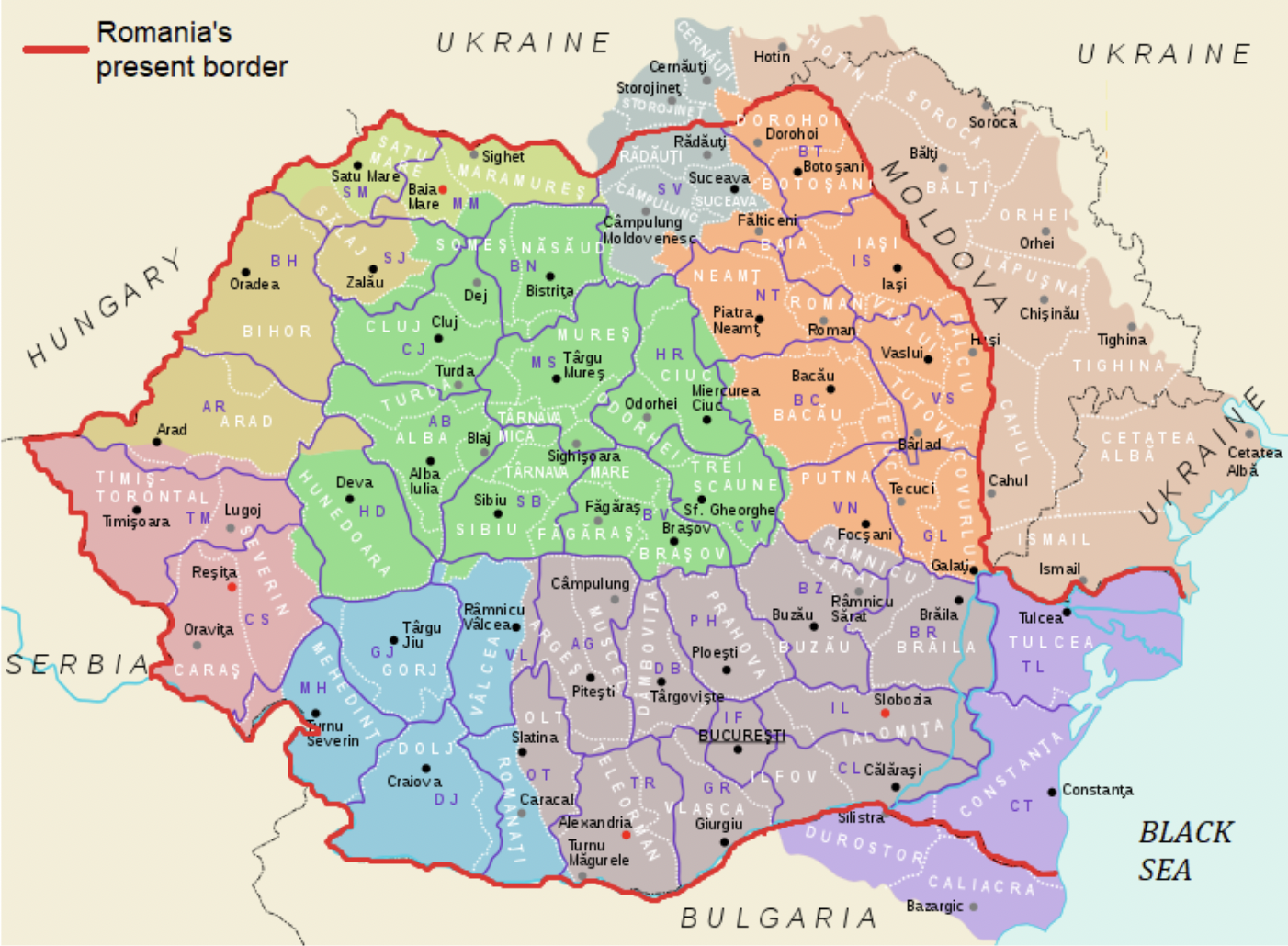Romania is a beautiful country with a long history, rich culture, and many unique traditions. Being a southeastern European country, it borders Moldova, Ukraine, Hungary, Serbia, and Bulgaria and has access to the Black Sea. Romania became a member of the European Union in 2007, which means whoever holds a European passport has access to quality education, healthcare, and other benefits like traveling throughout the EU without restrictions.
As the past few weeks have shown, you never know when you may need a second passport. If you’ve got Romanian heritage – and over 1 million Americans do – an alternative passport could be within easy reach in 2022.
Join Sovereign Confidential to…
Here’s how…
Situated in East Central Europe and bordering on the Black Sea, Romania is a highly picturesque EU country with a decent quality passport – it scores a solid B+ Grade in the Sovereign Man Passport Index.
Romania has been an astounding economic success story within the region over the last few years. It’s gone from strength to strength since the government reduced the red tape for businesses and cut taxation to a flat 10% on most types of personal income.
As an added bonus, the country is very inexpensive – scoring “2/7, Very Cheap” in the Sovereign Man Cost Of Living Index. It’s even cheaper than our other regional favorite, Hungary.
And if you’re of Romanian descent, the country’s Citizenship by Ancestry program can enable you to gain its citizenship and passport for next to nothing:
- Under Article 5 of the Romanian Citizenship Law (in Romanian), any child becomes a Romanian citizen at birth if at least one of their parents is a Romanian citizen, regardless of the child’s place of birth.
- Under Article 10, you can apply if your parent or grandparent was Romanian.
- Under Article 11, you can apply if your parent, grandparent, or great-grandparent was Romanian.
Who Can Obtain Romanian Citizenship by Descent?
Obtaining Romanian citizenship is possible for the following group of individuals. You are eligible for Romanian citizenship:
- By grandparents’ descent
- If you are a biological or adopted descendant of Romanian citizens
- If one or both of your parents were Romanian citizens
- If one of eight great-grandparents were Romanian citizens
Historical Romanian territory in the 20th century included bordering territories of other countries:
- Ukraine
- Republic of Moldova
- Hungary
- Bulgaria
If you have Romanian ancestry from one of those bordering territories, you are also eligible for Romanian citizenship.
How to Get Romanian Citizenship by Descent?
Article 10 at a Glance
Article 10 applies primarily to people who were once Romanian citizens and gave up their citizenship voluntarily. For example, people who chose to emigrate from Romania during the 20th century or earlier. Now they and their descendants, up to two generations later, can reclaim their Romanian citizenship.
Losing citizenship was easy back then. If your ancestor left Romania during the Communist regime, for example, their citizenship was automatically revoked.
But Article 10 also applies if your ancestor left Romania after 1990 – when the country became a free market economy – and then lost their citizenship for any other reason. Furthermore, the ethnicity of your ancestor is not essential. They could also be of Hungarian, Jewish, Ukrainian, or other descent.
What is vital to prove, however, is that your ancestor was once a Romanian citizen.
Today, such Romanian emigrants and their descendants up to two generations later (i.e., grandchildren) can claim their citizenship back. There is a way to include the third generation in the same application, but only if they are still under 18 years of age.
How Is Article 11 Different?
Article 11 of the law covers former Romanian citizens who lost their citizenship involuntarily due to the border changes that occurred during the 20th century.
Notably, it applies to people who once lived within the borders of “Greater Romania” – the largest territory ever occupied by Romania – between 1918 and 1940.
But as a result of WWII, Romania lost a significant portion of its territory. Lost territories ended up in present-day Moldova, Ukraine, and Bulgaria, as depicted below.

Greater Romania and present-day Romania’s borders
As a result, Romanian citizens who once lived in these territories lost their Romanian citizenship after WWII and became Moldovans, Ukrainians, or Bulgarians instead.
According to Article 11, all of these people (and their descendants up to the third generation later) are eligible. That’s one generation further back than Article 10.
It doesn’t matter whether your ancestors eventually left Moldova, Ukraine, or Bulgaria. Today, their descendants can claim Romanian citizenship.
For example, pretty much anyone born in Moldova between 1918 and 1940, along with their descendants, is eligible for Romanian citizenship.
Our attorney on the ground mentioned that in 2021 alone, more than 30,000 people submitted their citizenship applications under the program.
Of course, you will still need to prove that your Romanian ancestor was born in the territory of Greater Romania and that you directly descended from them.
Note: Our Sovereign Confidential members have access to a series of deep-dive Black Papers covering all of the European Citizenship By Ancestry programs. These papers cover the criteria, application process, and documentary requirements for each program in detail. Sovereign Confidential members also benefit from access to our Rolodex of vetted service providers for each of these programs.
How to Apply for Romanian Citizenship by Descent?
According to the Romanian law, the process of acquiring Romanian citizenship by descent is actually treated as regaining or restoring it. There are six steps you should follow to successfully obtain Romanian citizenship.
Step 1: Identify Your Romanian Ancestors
Clearly, to receive a Romanian passport by descent, you need to discover your Romanian ancestors. Those could be your parents, grandparent, or great-grandparents who were once Romanian citizens.
We’ve mentioned earlier that even if your ancestors were born in the bordering countries that were a part of Greater Romania, you can still apply to receive Romanian citizenship by descent. This applies to people whose ancestors lost their citizenship.
Another important piece of information is that you don’t have to speak Romanian. However, knowing the basics is definitely a plus when you arrive to Romania.
Step 2: Provide Legal Proof of Your Romanian Ancestry
This step may be the most time-consuming since you will have to obtain proof of your Romanian heritage. To do that, you can receive certified proof from Romanian authorities, or you can manually search for the proof in the Romanian archives.
Finding the proof may be an obstacle if you aren’t in Romania and don’t have any relatives to help you with this matter.
In addition to that, you will have to provide your own documents, translated into Romanian and legalized, that confirm your connection to your ancestors.
Step 3: Gather All the Documents and Prepare a Citizenship File
You will need to submit the citizenship application to the Ministry of Justice in Bucharest, the country’s capital.
Language and history tests are not required, but you will need to learn the Oath of Allegiance in Romanian and take it in front of a Romanian official.
However, a service provider we discussed this matter with strongly recommends learning at least some Romanian, as you need to be able to have a basic conversation with a Romanian official.
Romania also allows dual citizenship, so renouncing your current citizenship(s) won’t be necessary.
Sadly, only children under 18 years old can be included in your application.
However, any children you may have after becoming Romanian will become citizens at birth, according to Article 5 mentioned above.
In short, here is a list of documents you should add to your file before submitting it to the National Authority for Citizenship:
- Your passport
- Proof of income (if you wish to reside in Romania)
- Criminal record from your country of origin
- Civil status documents for your ancestors (including passport, birth certificate, marriage certificate, etc.)
- Proof of lost citizenship
If you want your family members (spouse and children) to receive a citizenship certificate together with you, you should include their legal documents, too.
Step 4: Personally Submit the Citizenship File
You can submit documents for Romanian citizenship only in person. However, if you cannot travel due to your health condition, you can do it from abroad.
You will need to locate a consular office of Romania in your country of origin, and submit the file there.
Once you apply, you will receive a registration number which can be tracked on the official website of the National Authority for Citizenship.
Step 5: Decree Granting
If your file doesn’t lack any formalities, you can calmly wait for further information from the National Authority for Citizenship.
Soon enough the President of the National Authority for Citizenship will grant you a decree. The official confirmation will be sent to your address. Once you have an original copy of it, you are one step closer to receiving Romanian citizenship.
Step 6: Take an Oath
From the day your file is approved, you have 6 months to take action – otherwise, you can risk losing the decree to obtain Romanian citizenship.
We’ve mentioned earlier that you don’t have to speak Romanian and there are no tests, except for the Oath of Allegiance. The oath is in Romanian and you will need to memorize it by heart. Luckily, it is only 3 lines long:
Jur să fiu devotat Patriei și poporului român,
Să apăr drepturile și interesele naționale,
Să respect Constituția și legile României.
(I swear devotion to the Romanian country and Romanian people,
I swear to defend the rights and national interest,
to respect the Constitution and the laws of Romania)
During a swearing-in ceremony, you will need to recite the lines in front of the chief of the consular office of Romania in your country of origin.
After the ceremony, you will be granted Romanian citizenship certificate. Your next step is to obtain the transcription of the civil status documents from the Civil Status Office in Romania.
Where to Apply to Acquire Romanian Citizenship?
Even if you hire professional help in Romania (which we suggest you do), you will still need to travel to Romania for the submission process. The process reportedly takes around 18 months to complete.
It’s also possible to submit your application to one of Romania’s consulates, but this just adds an extra step and will prolong the approval process by about a year.
The Bottom Line
The world continues to be a very uncertain place in 2022, making a robust Plan B even more vital than it was during the pandemic. The Romanian program, along with scores of other ancestry programs, featured in the pages of Sovereign Confidential provides millions of people worldwide with the means to obtain a second passport.
And if you’re one of the “Lucky Bloodline Club” members that qualify, you should get your application submitted ASAP.
Yours in freedom,
Team Sovereign Man








